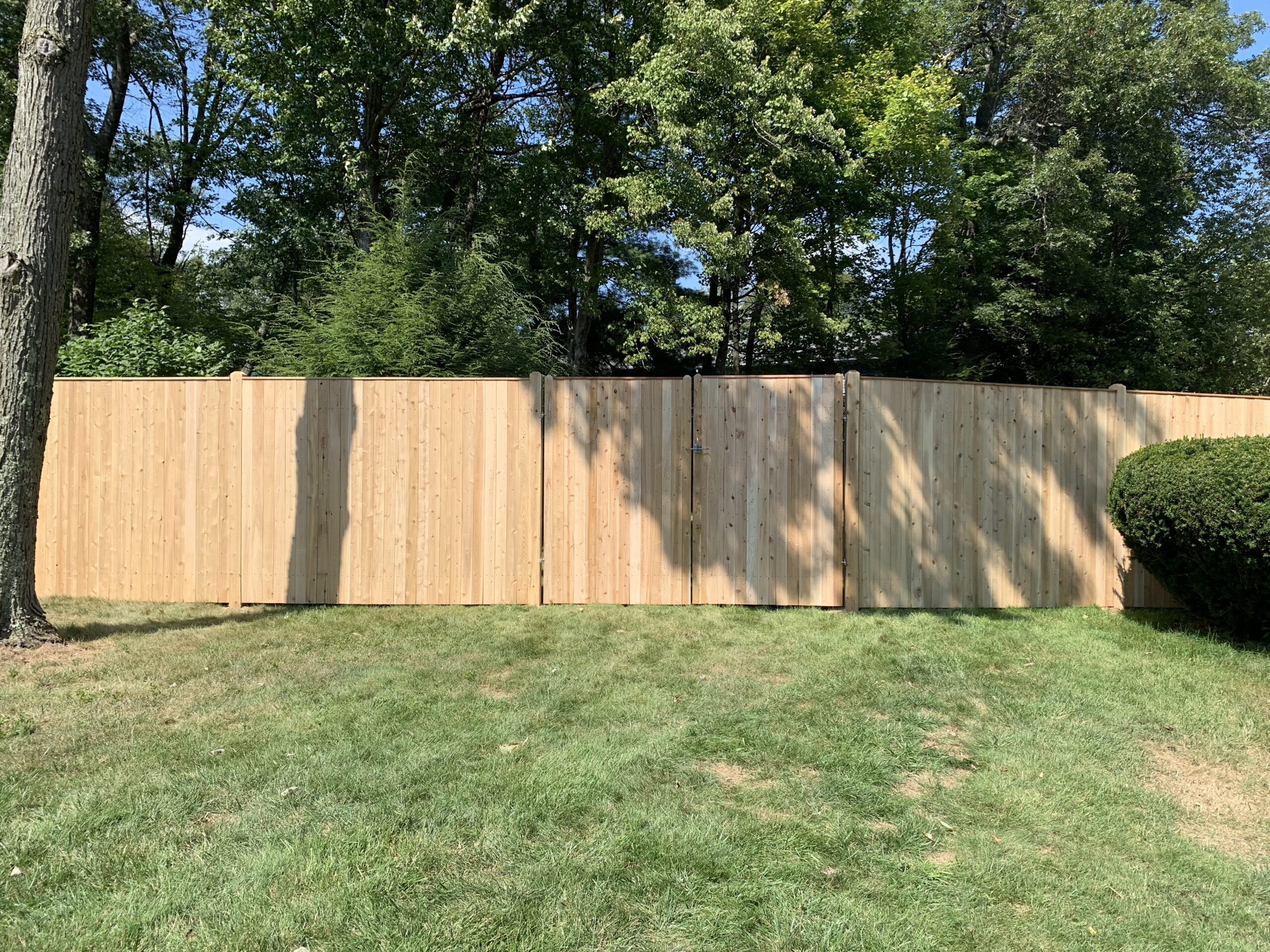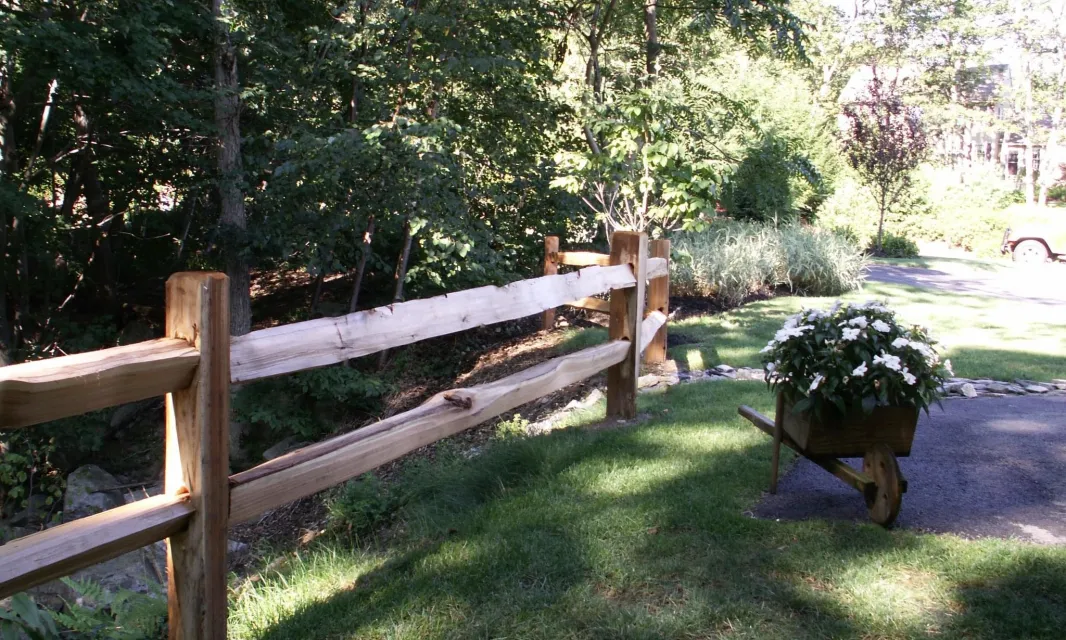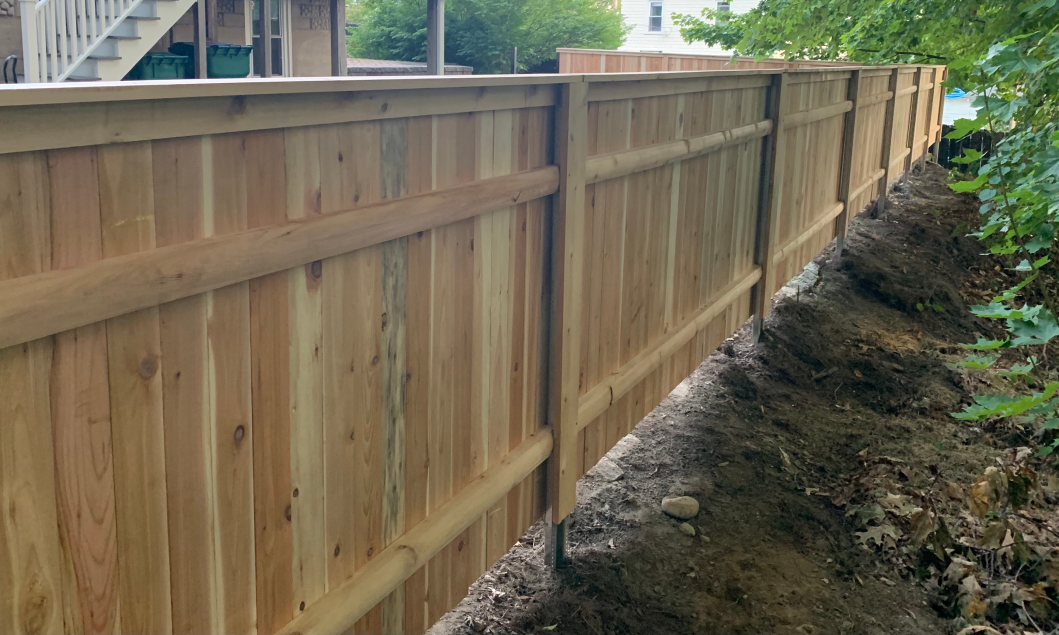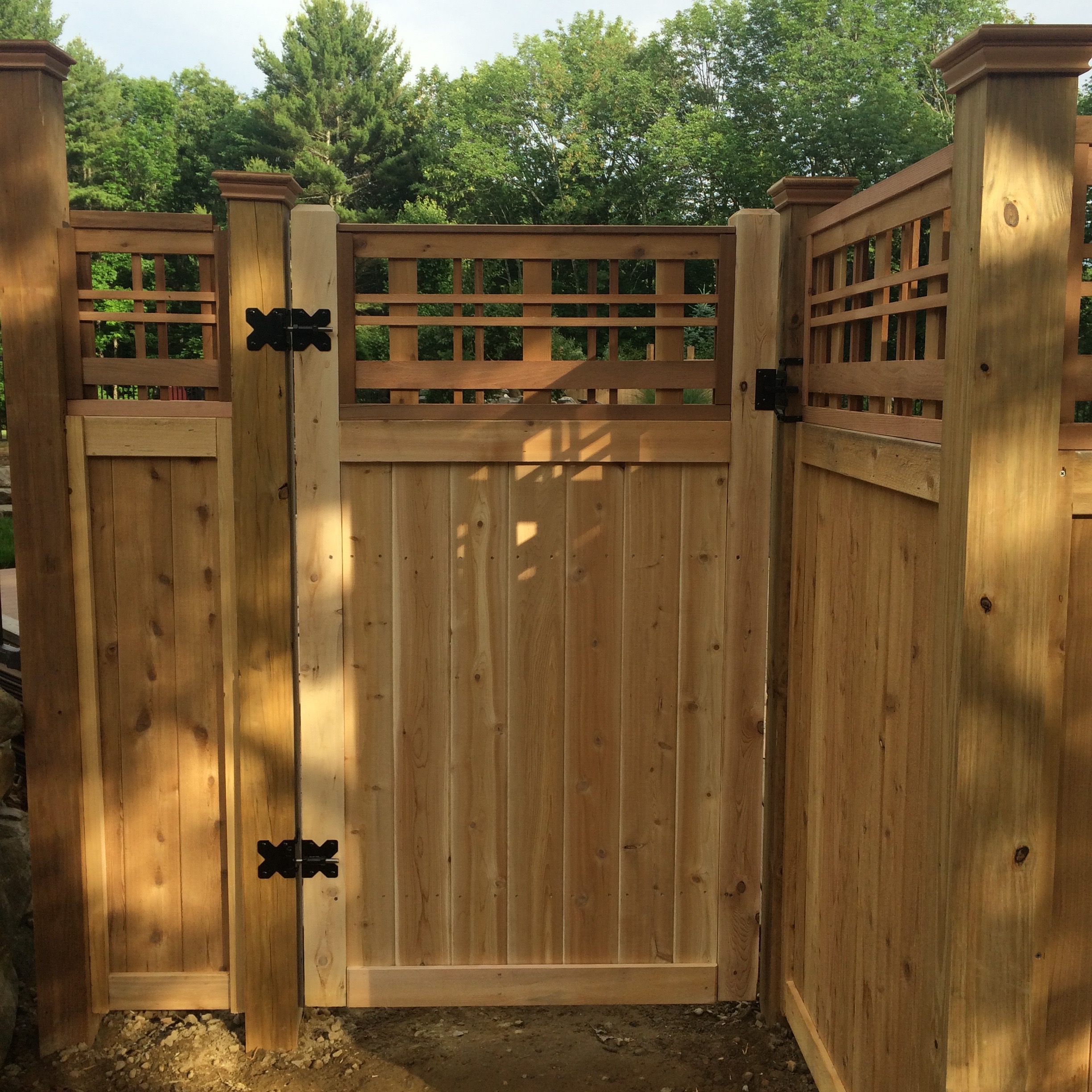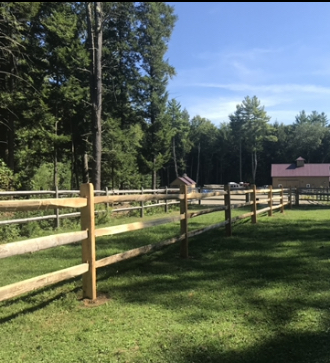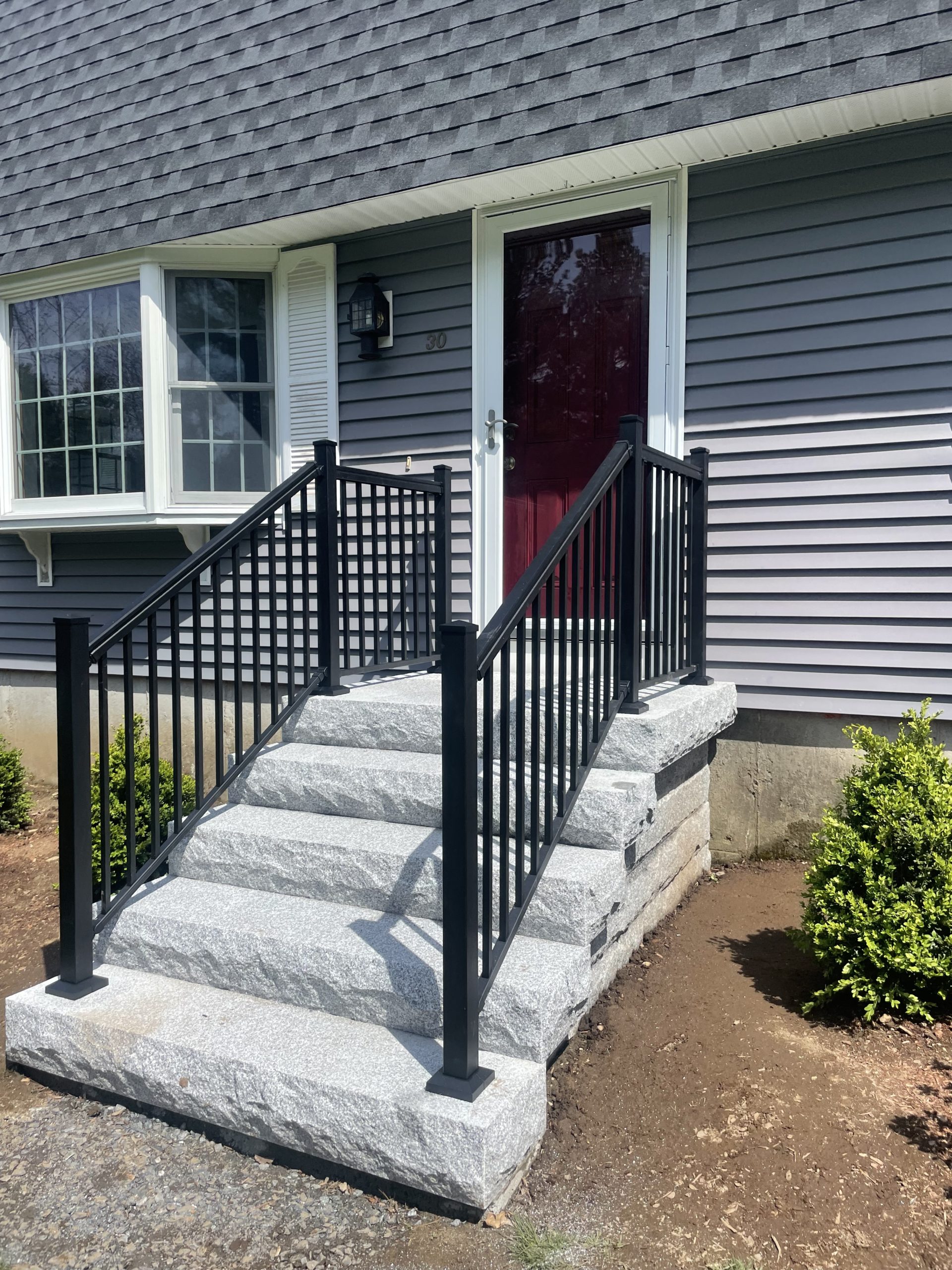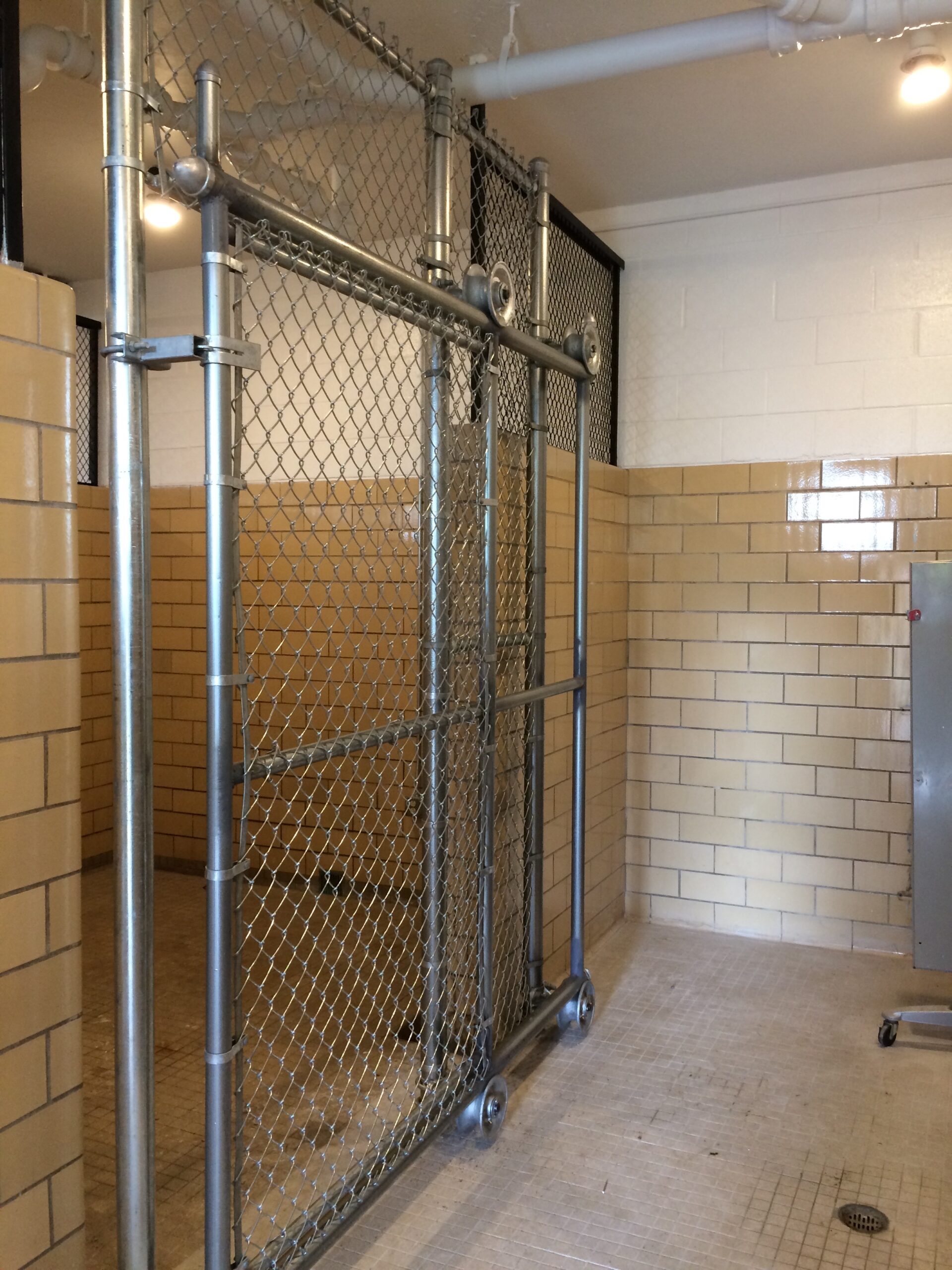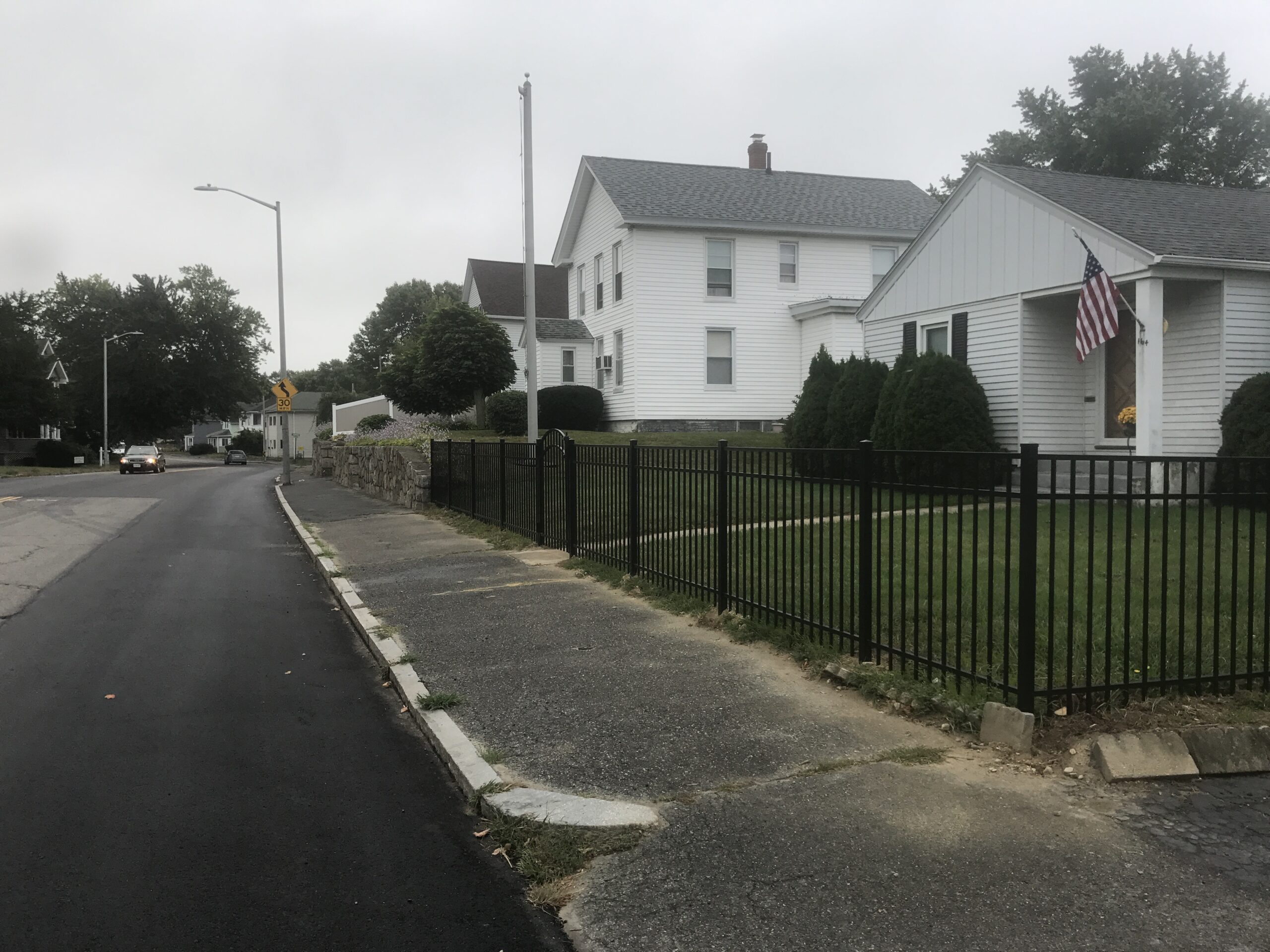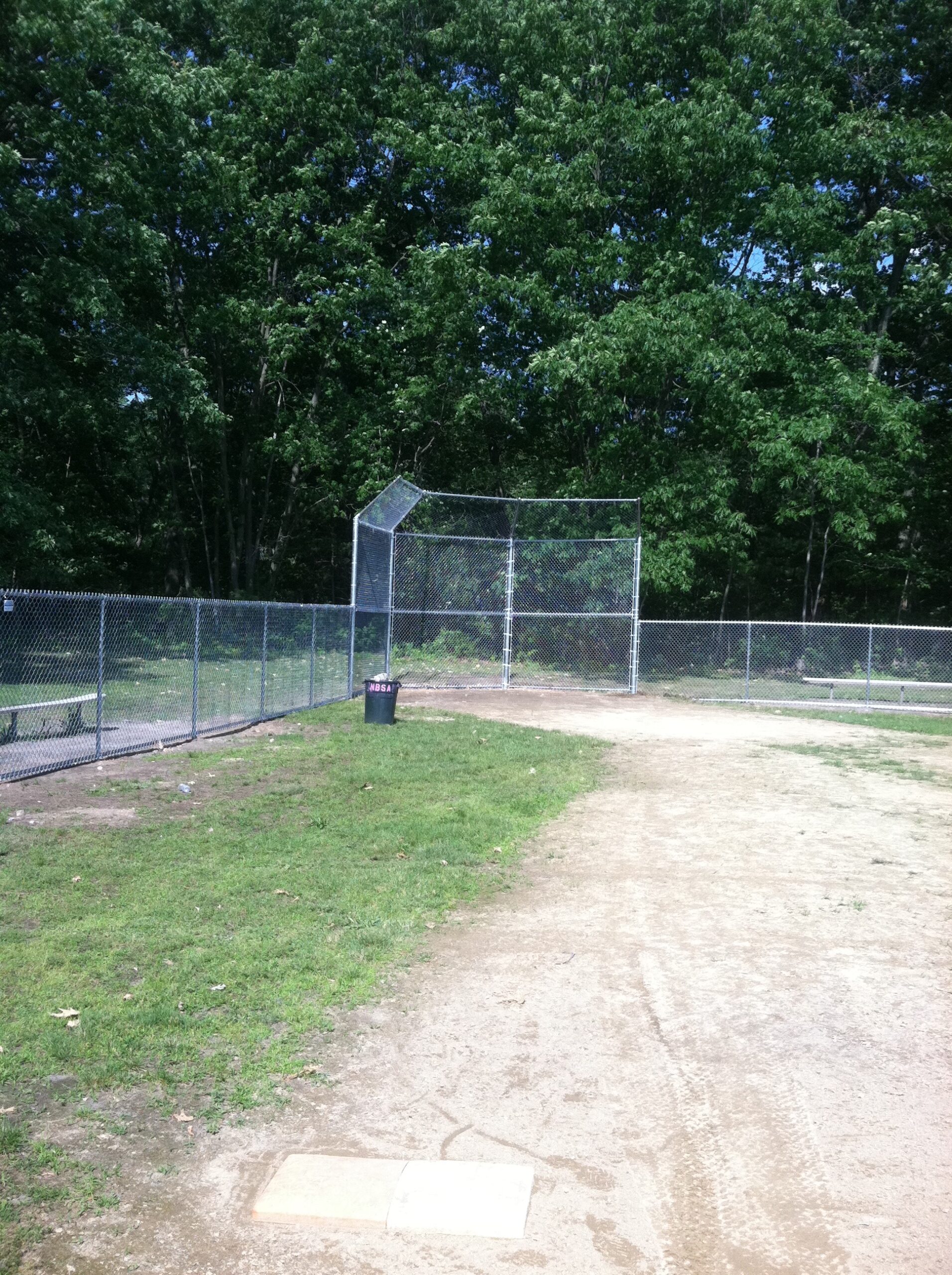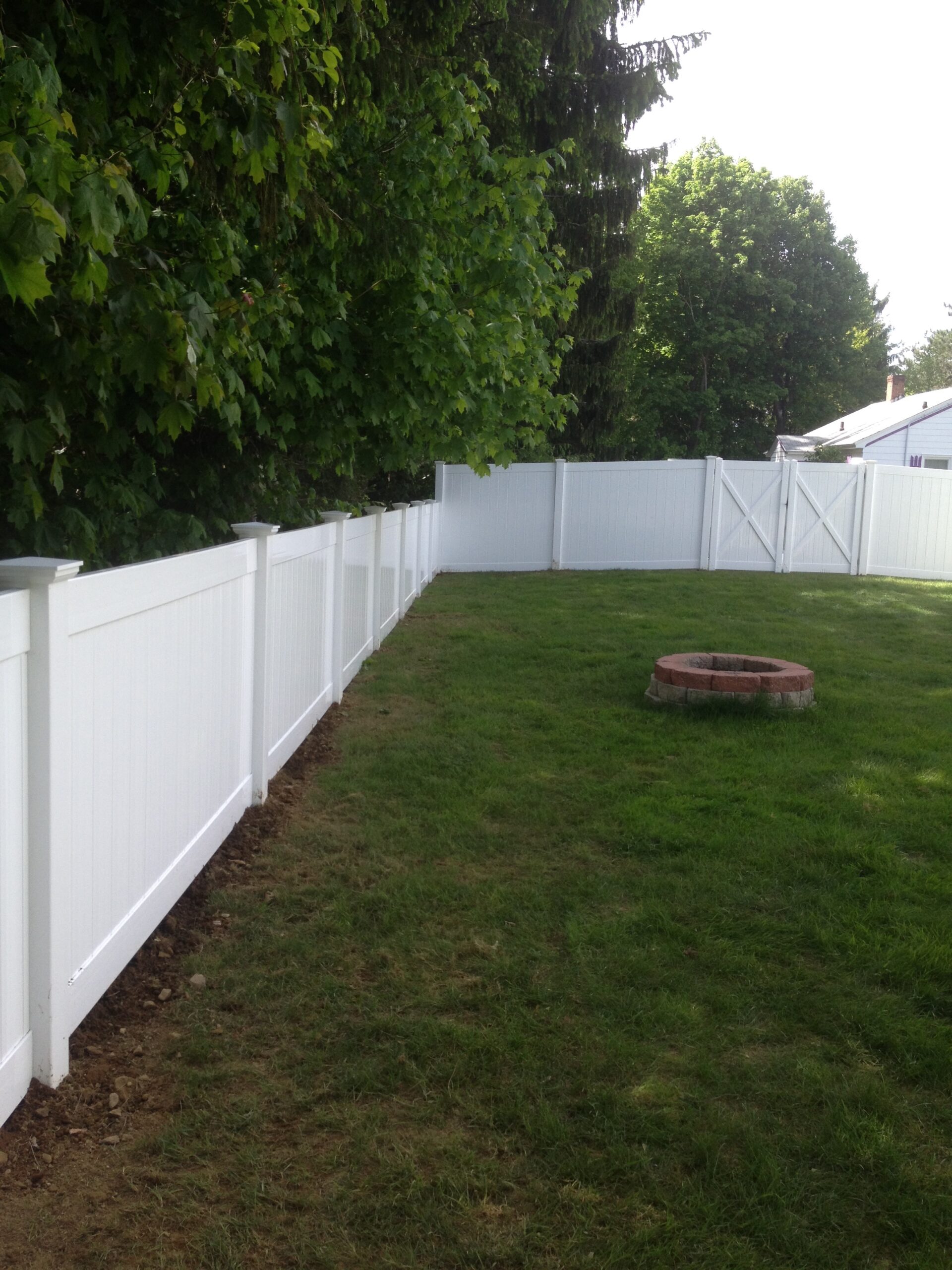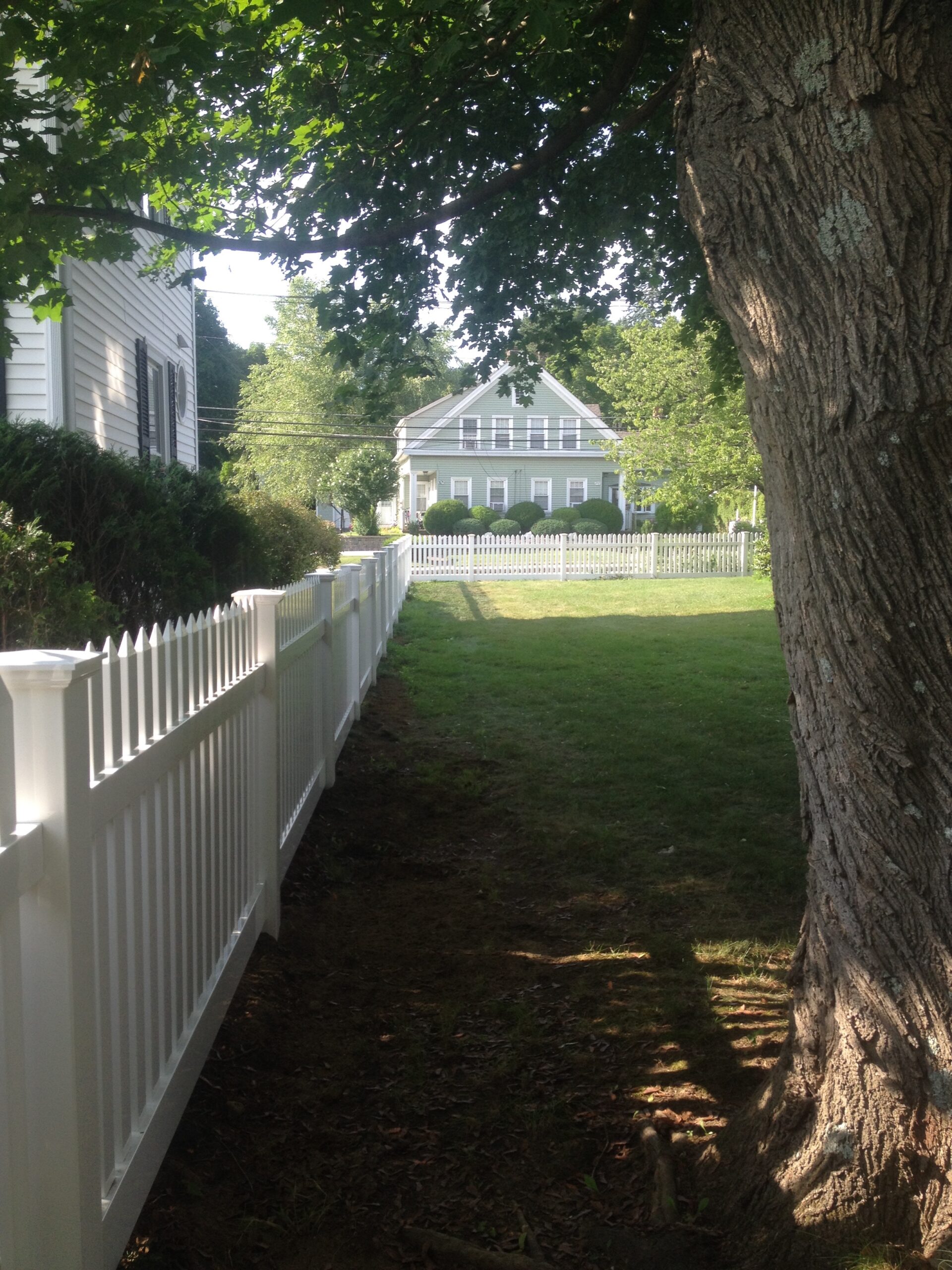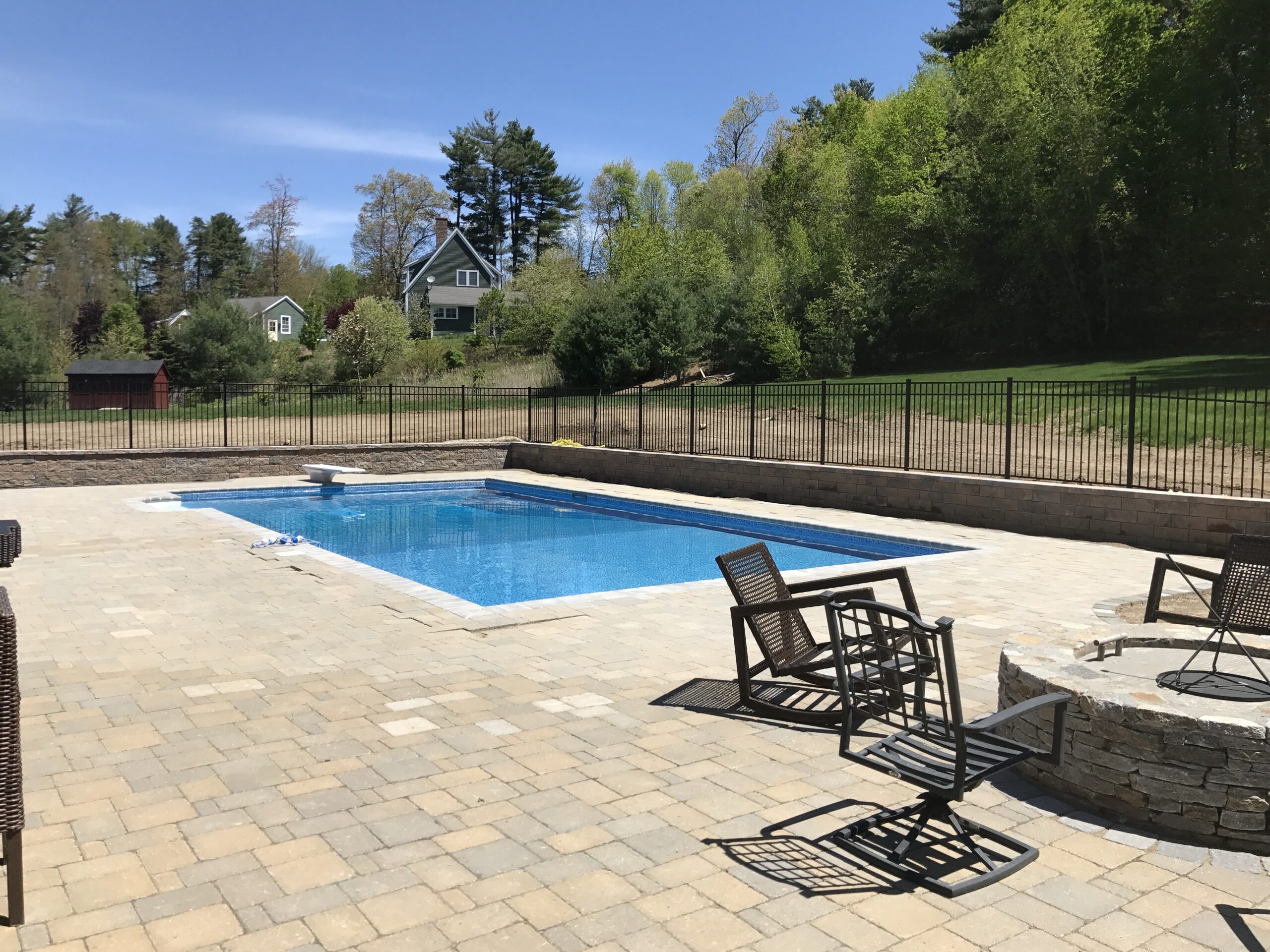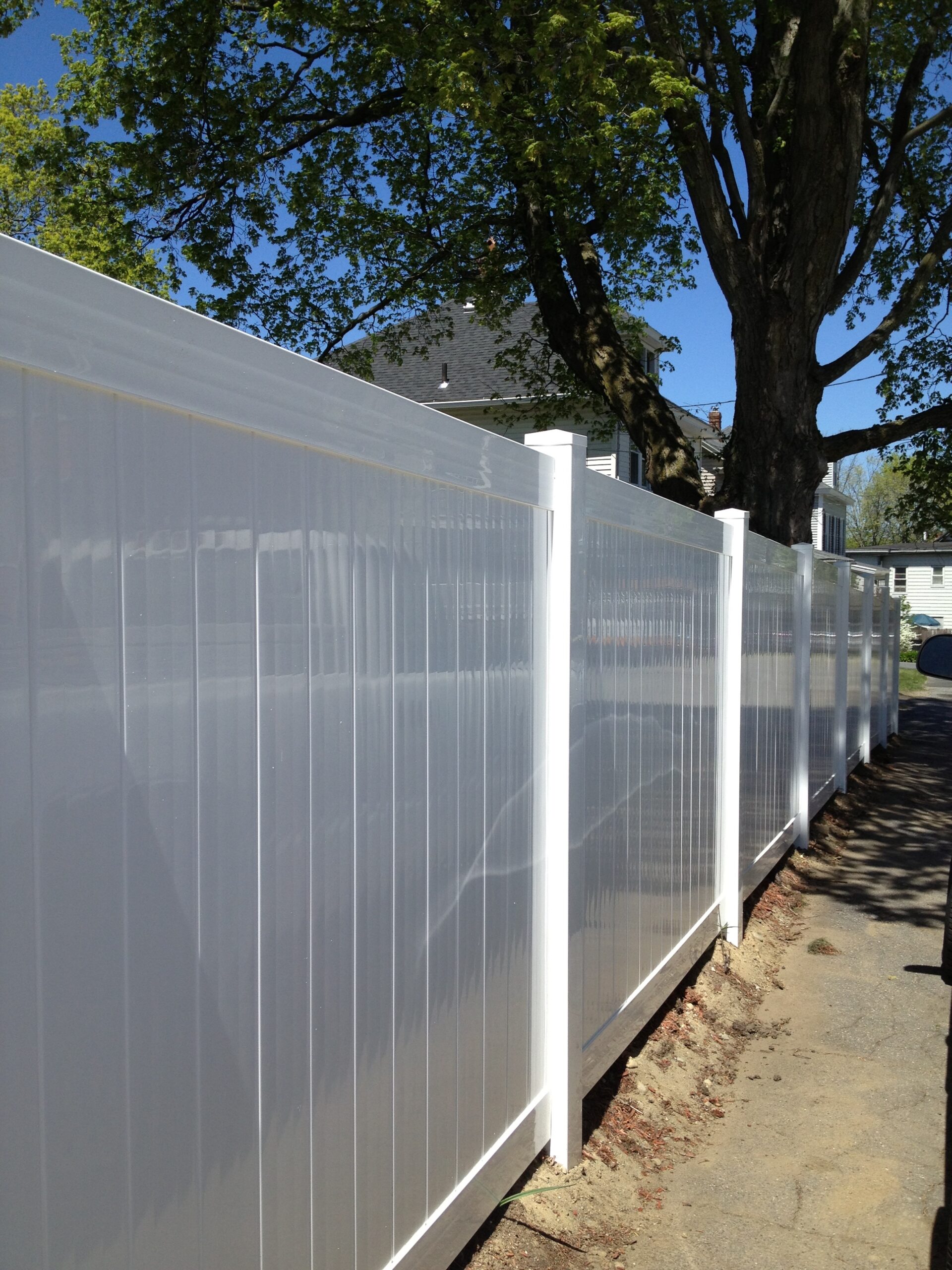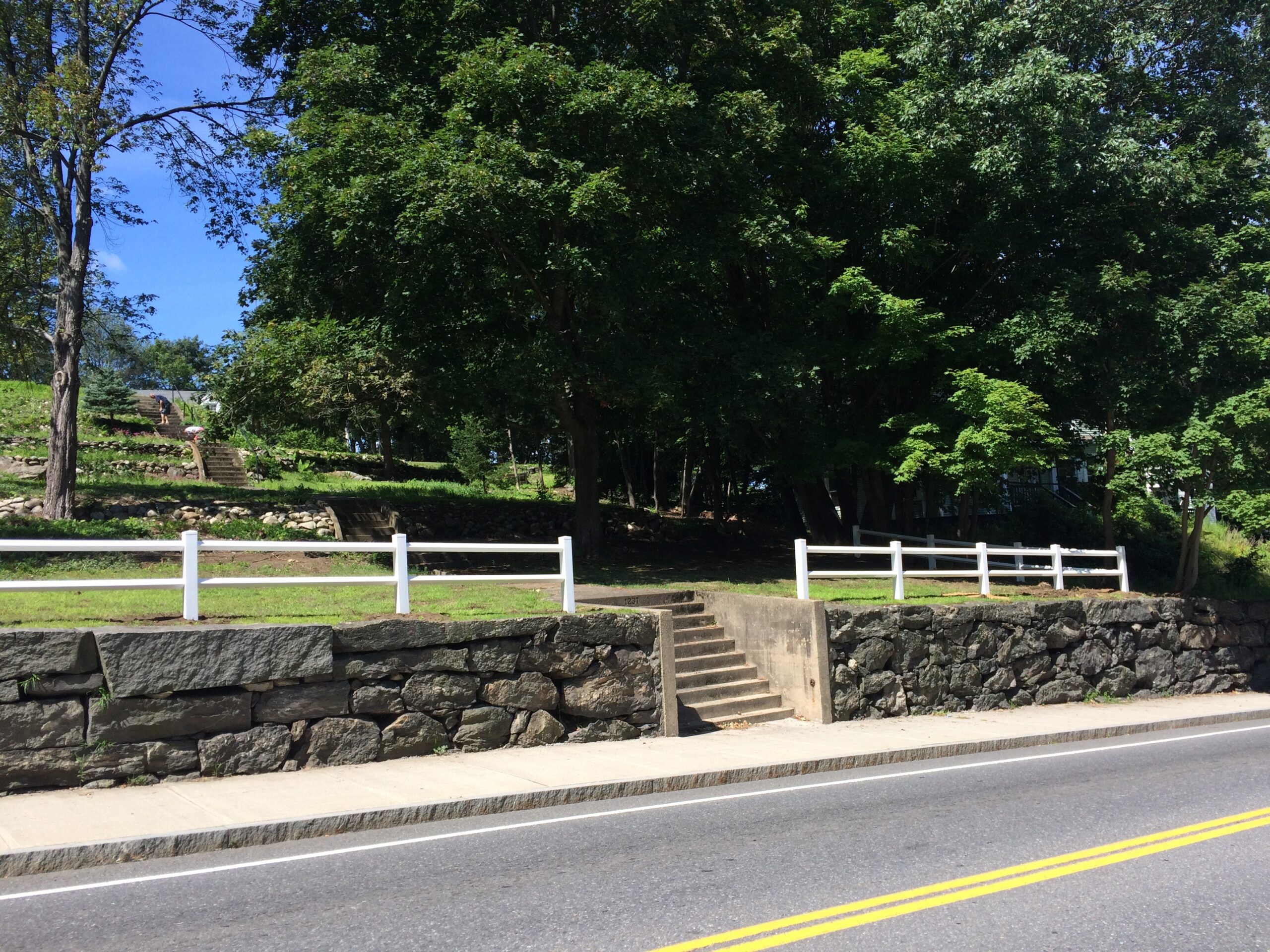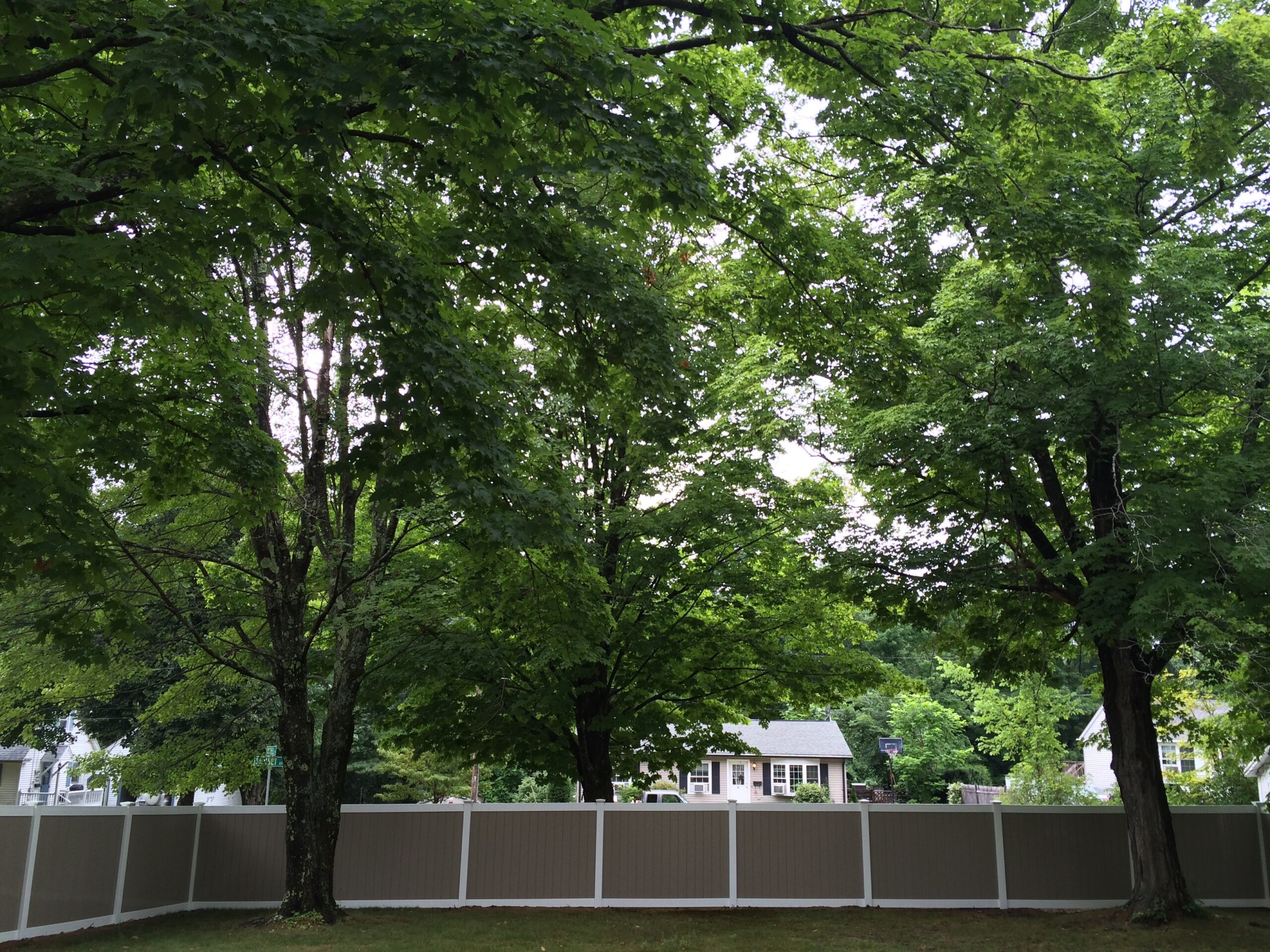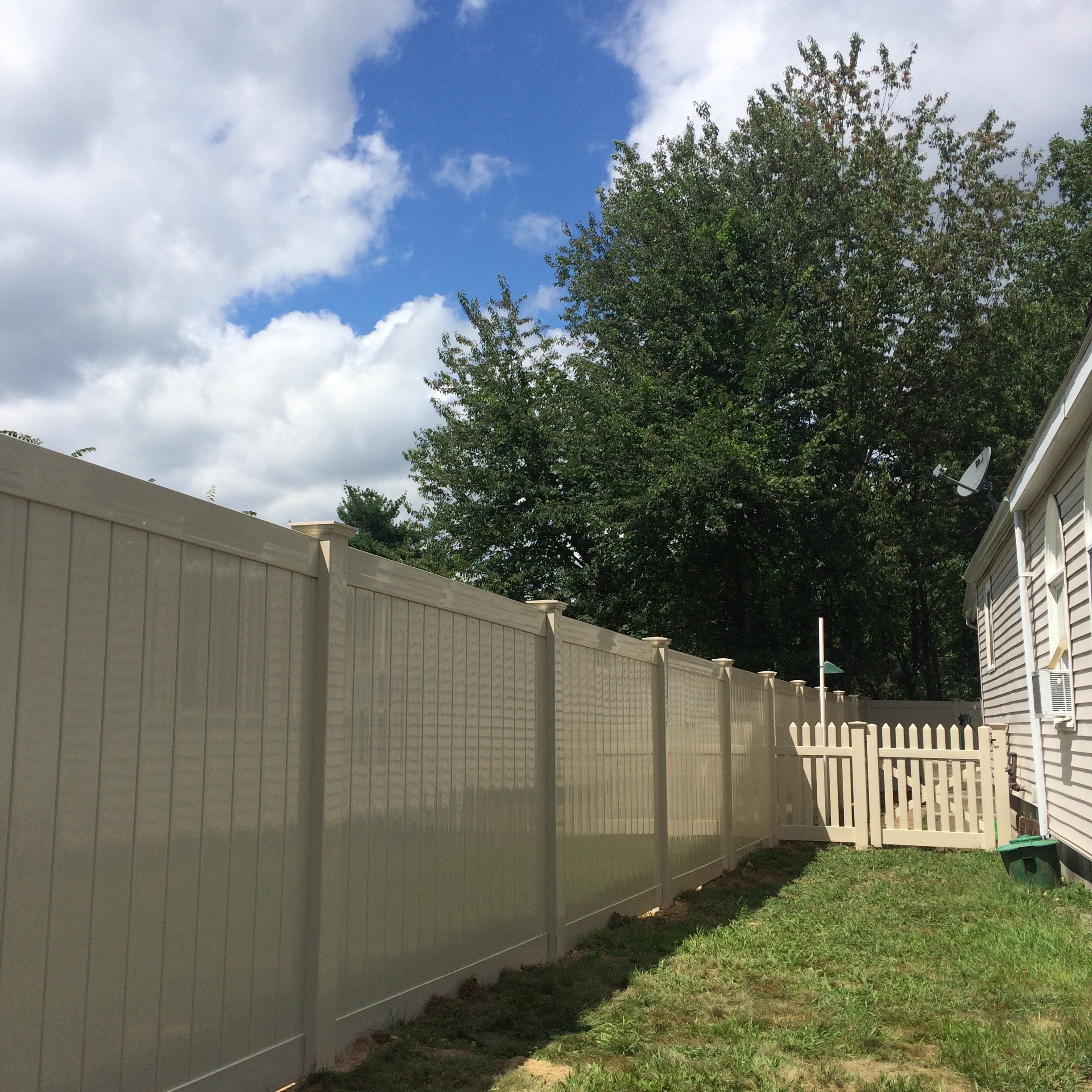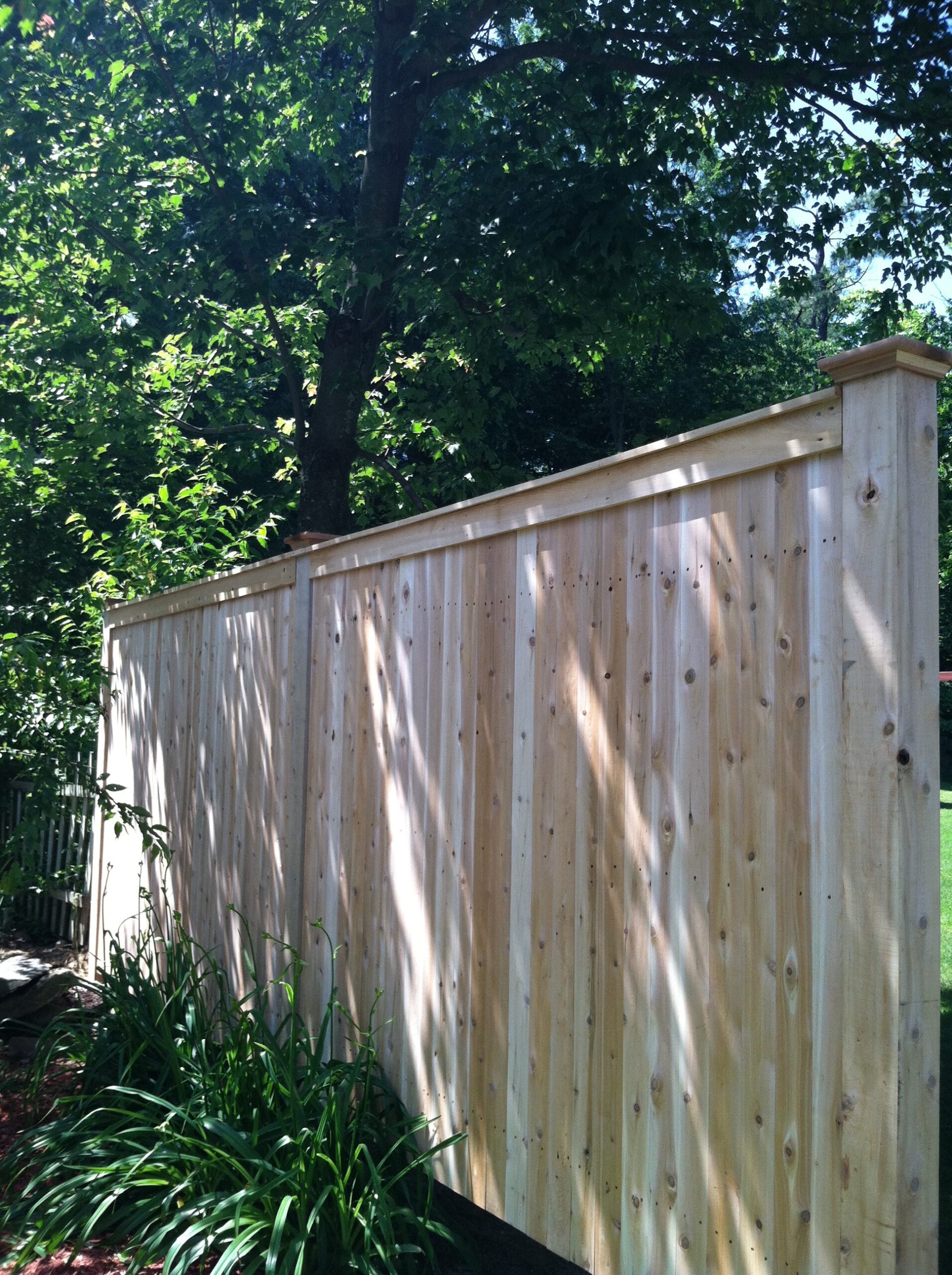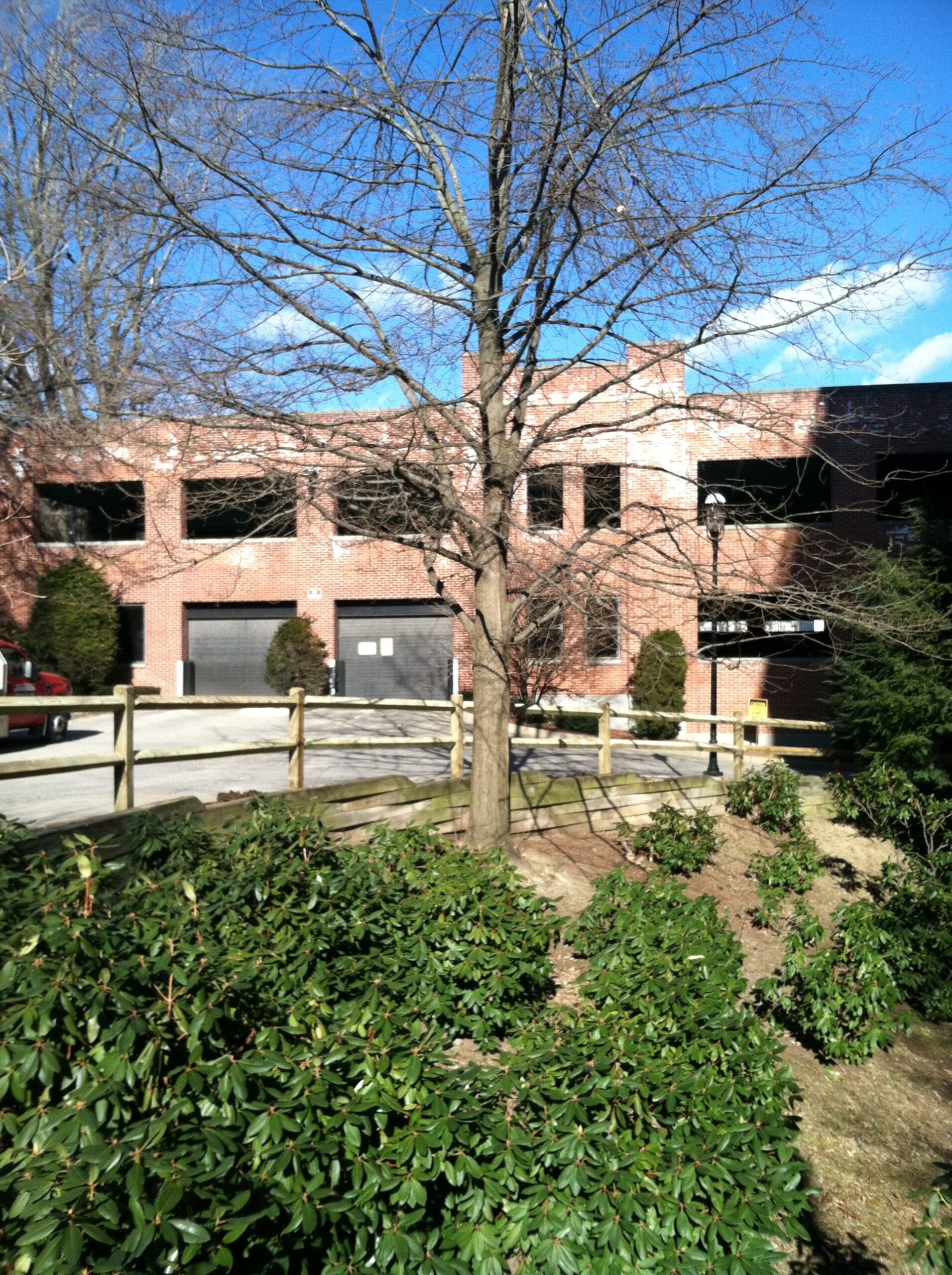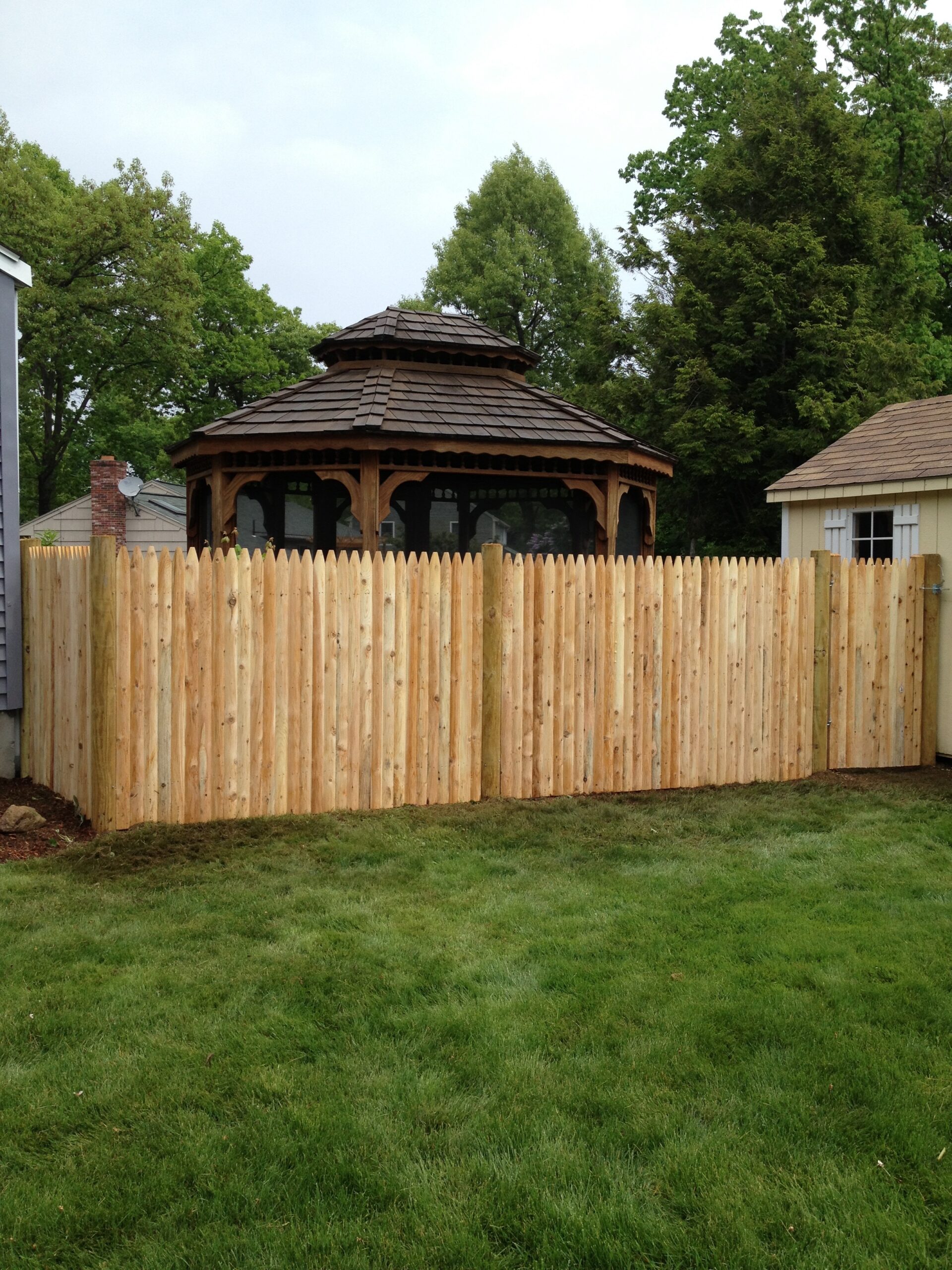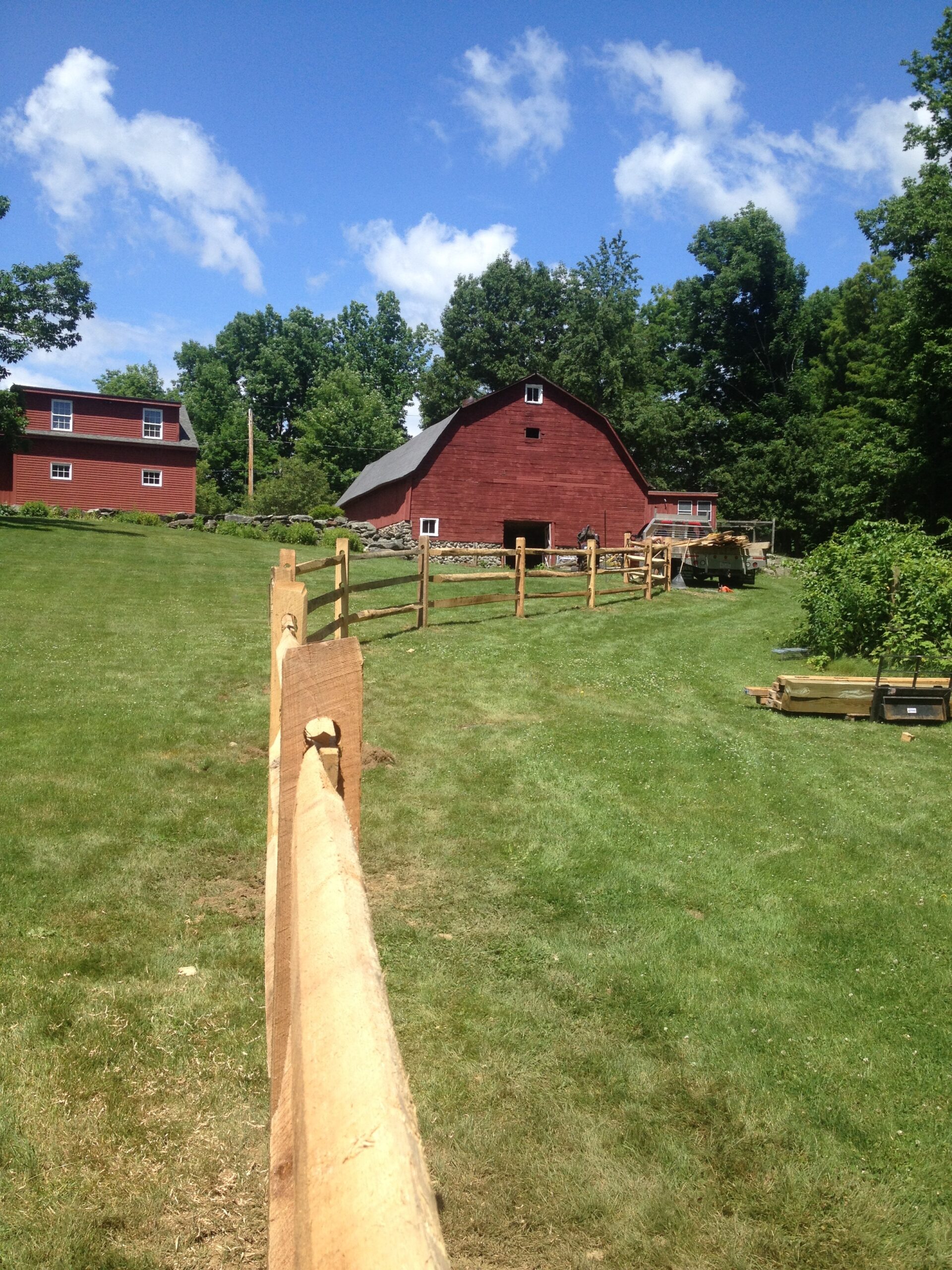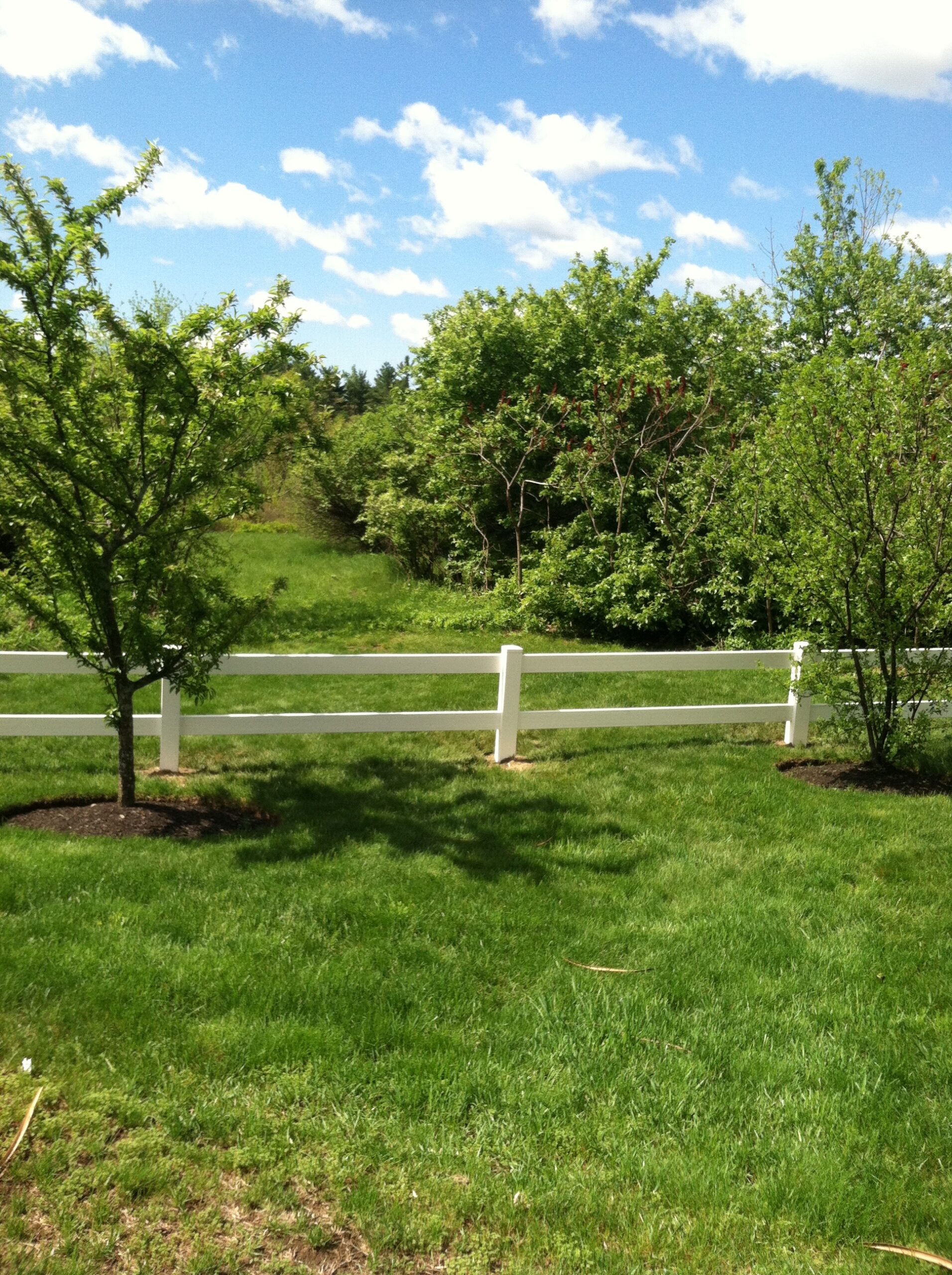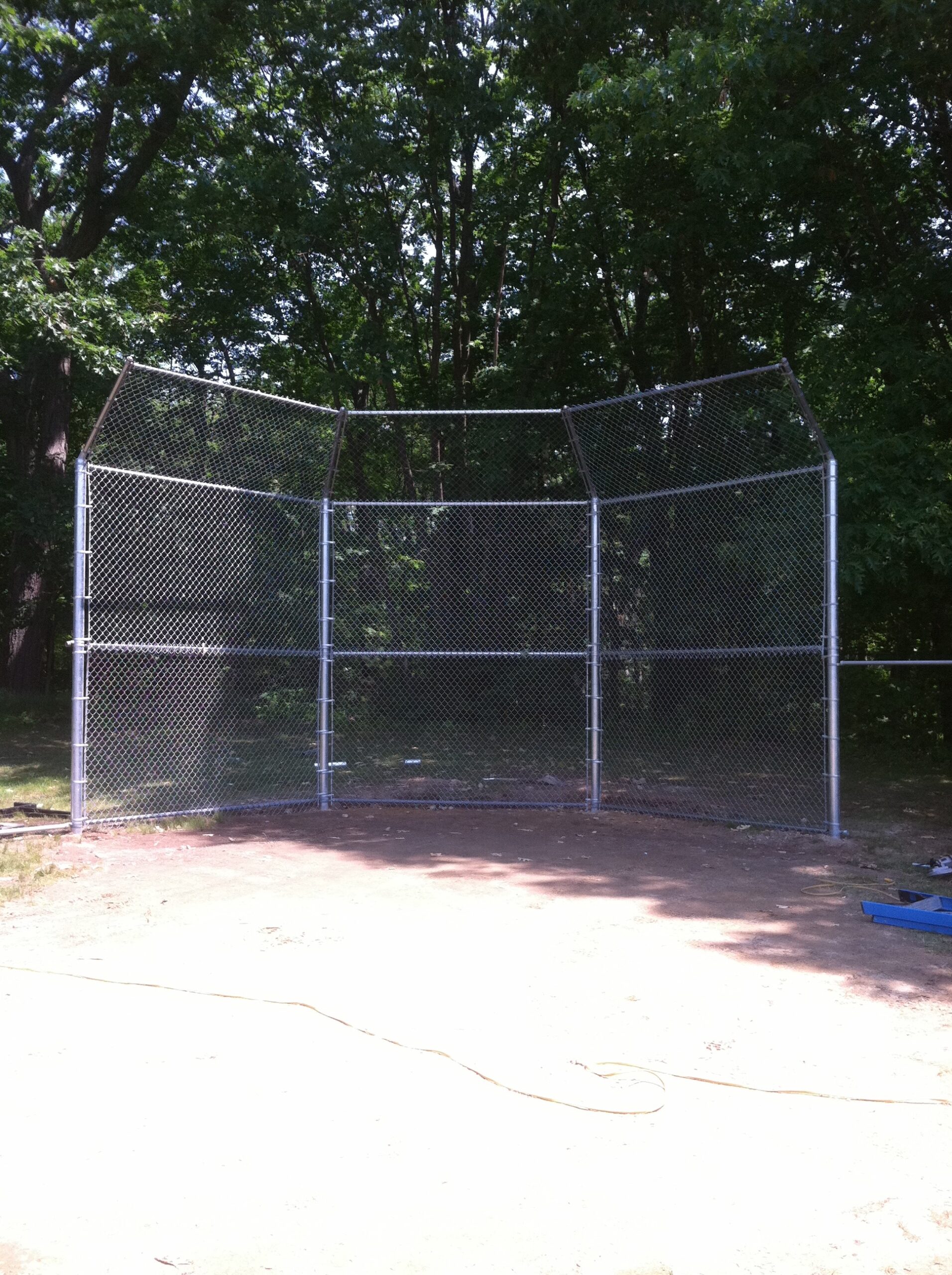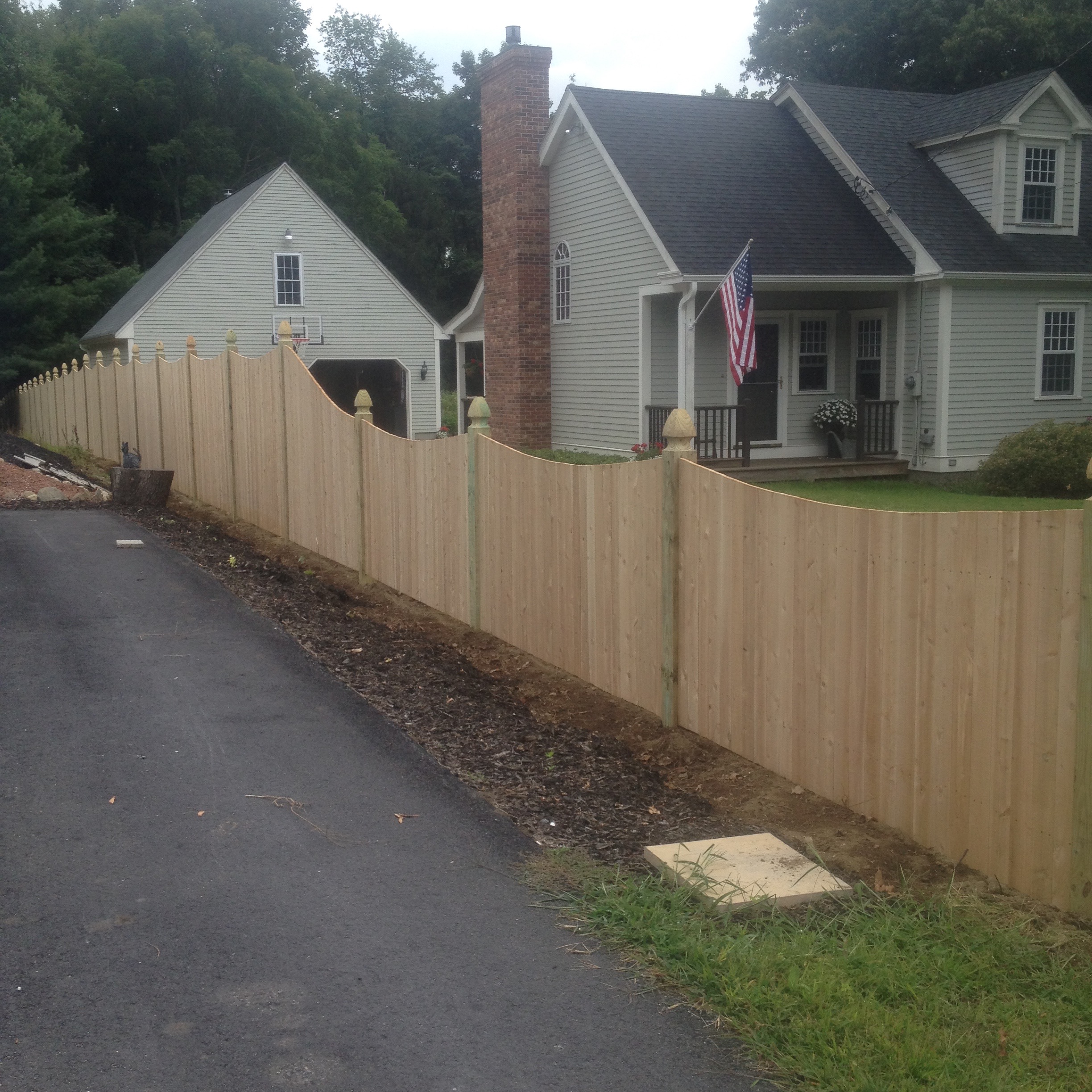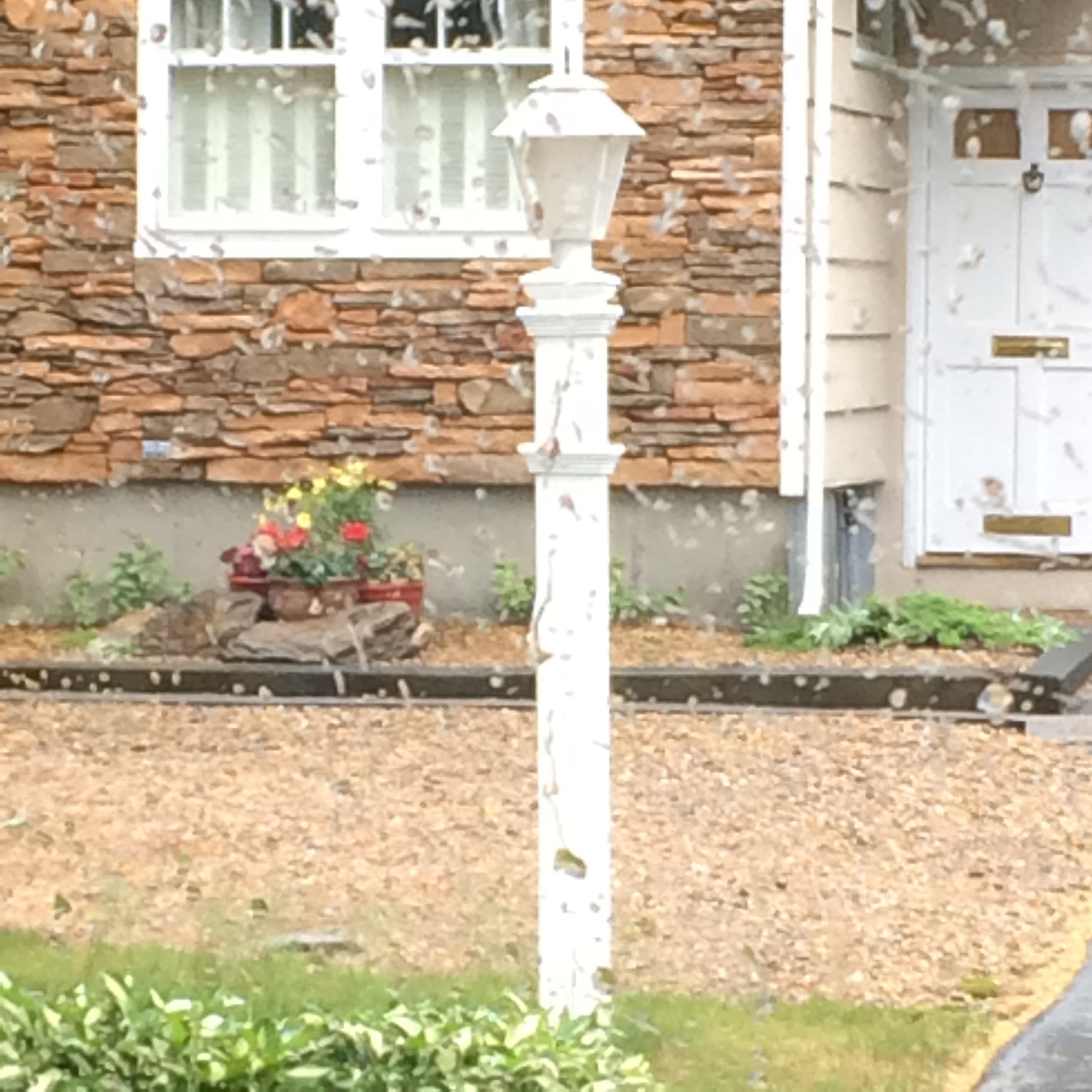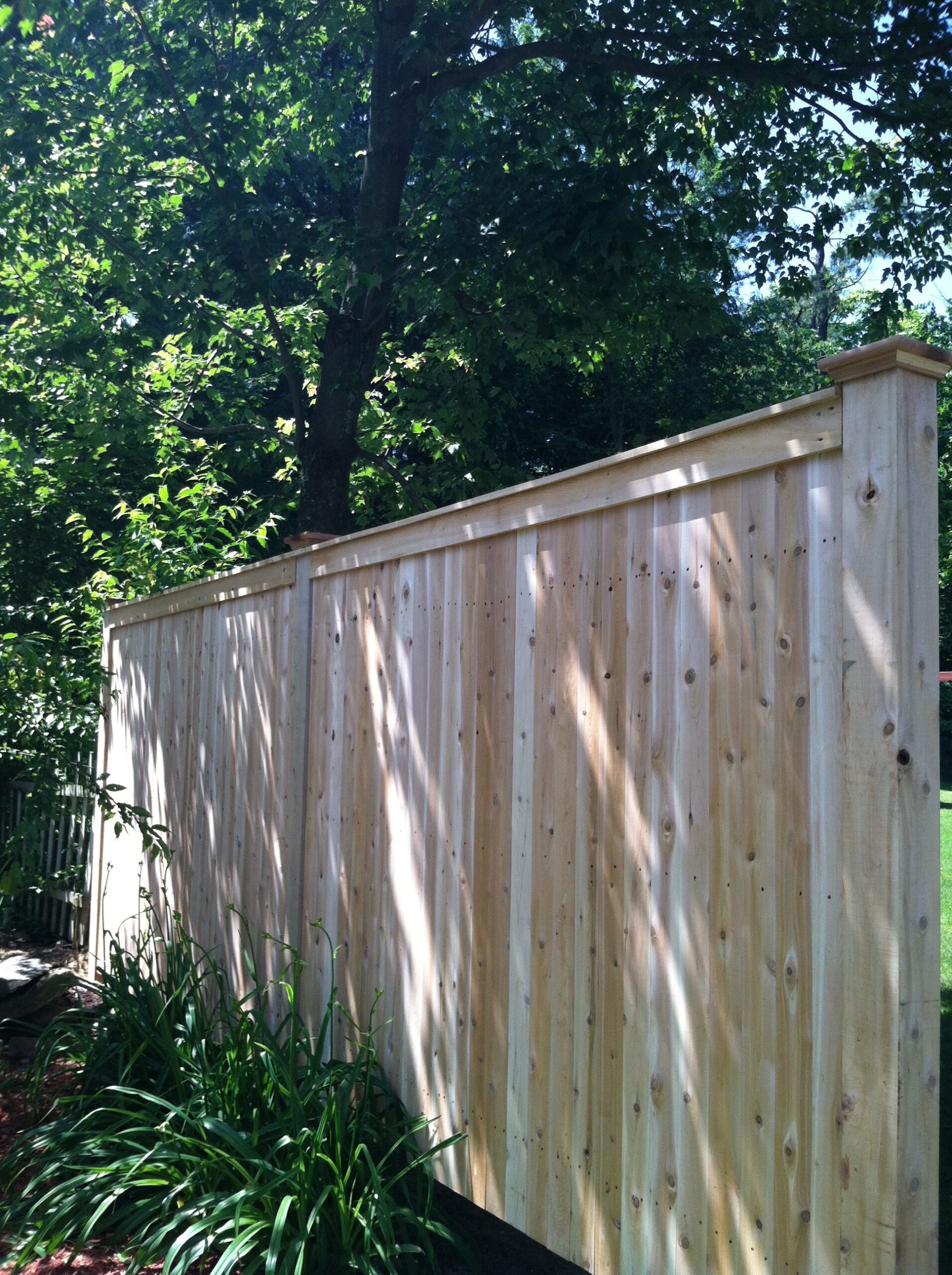Wood fencing comes in a variety of forms and finishes that make it an ideal choice for homeowners and businesses alike. The three main benefits of using wood fencing are its aesthetic value, its privacy and its longevity. Since wood is such an adaptive material, it is very versatile and can be used in a variety of functions.
Cedar Board on 4×4 Cedar Post
Whether created from pressure treated pine or a type of cedar, the natural beauty of a wood fence remains desirable in residential, commercial and agricultural applications. By following correct installation and treatment procedures, these fences will last for many years.
Cedar Stockade on Round Cedar Post
Picket fencing remains the most popular type of wood fencing today. This style works in any application, and has many options available to customize its appearance. When more security is necessary, privacy fencing can provide both style and safety. Both homeowners and businesses appreciate the seclusion and protection that a privacy fence provides. For a post and rail fence, wood continues to be the most practical and economical solution. Wood is not only an environmentally sound choice; it is also cost-effective to cover large areas of land using a wood post and rail fence.
No matter what the type and style of fence, the use of wood will add a natural beauty. Through correct design and installation, a wood fence will serve its purpose for many years to come.
Gothic Cedar Picket
Western red cedar remains one of the most popular species of wood used in fencing because of its natural beauty and longevity. While this type of wood costs a bit more than Southern yellow pine, it naturally resists warping and rotting in most situations. However, it is important to follow a few guidelines when installing cedar fencing. Cedar fences should have at least a 2″ clearance from the ground to avoid the possibility of rot. Also, cedar posts should not be set in concrete; the post should be inserted directly into the ground. This will improve drainage around the post and ensure the integrity of the fence.
In some cases, rotting or warping posts have shortened the lives of wooden fences. Since the posts are inserted into the ground, they become more susceptible to rot than the rest of the fence. By following a few simple guidelines, many of these problems are eliminated. As already mentioned, cedar posts will rot if they are set in concrete. By placing cedar posts directly into the post hole, this problem can be avoided. Pressure-treated pine posts are ideal for fencing because they resist rotting.
Western Red Cedar Split Rail
In addition to wooden posts, steel and metal posts are also available. With the [metal post and facia board] system, you can’t see the metal post. It looks like an all wood fence, but it actually utilizes metal posts. Long-lasting metal posts help make wood fences more durable.
All types of wood used for fencing can be treated with a water-repellent solution to help resist warping. These solutions also protect against insect damage. While most choose to leave their fences a natural color, there are many shades of stain and paint to choose from. Homeowners and businesses can plan the color of their fence to coordinate with its surroundings. These finishes also help seal the wood, giving it a longer life.
Cedar Board on Steel Post

GALLERY
